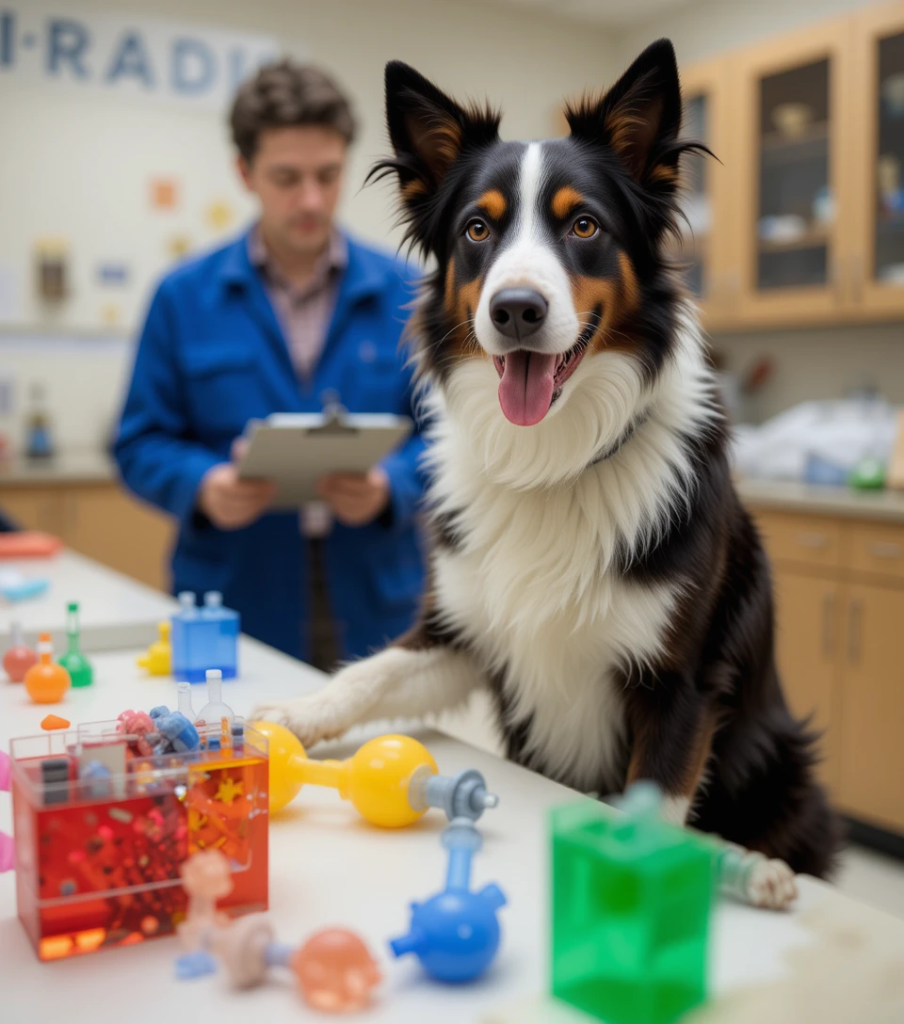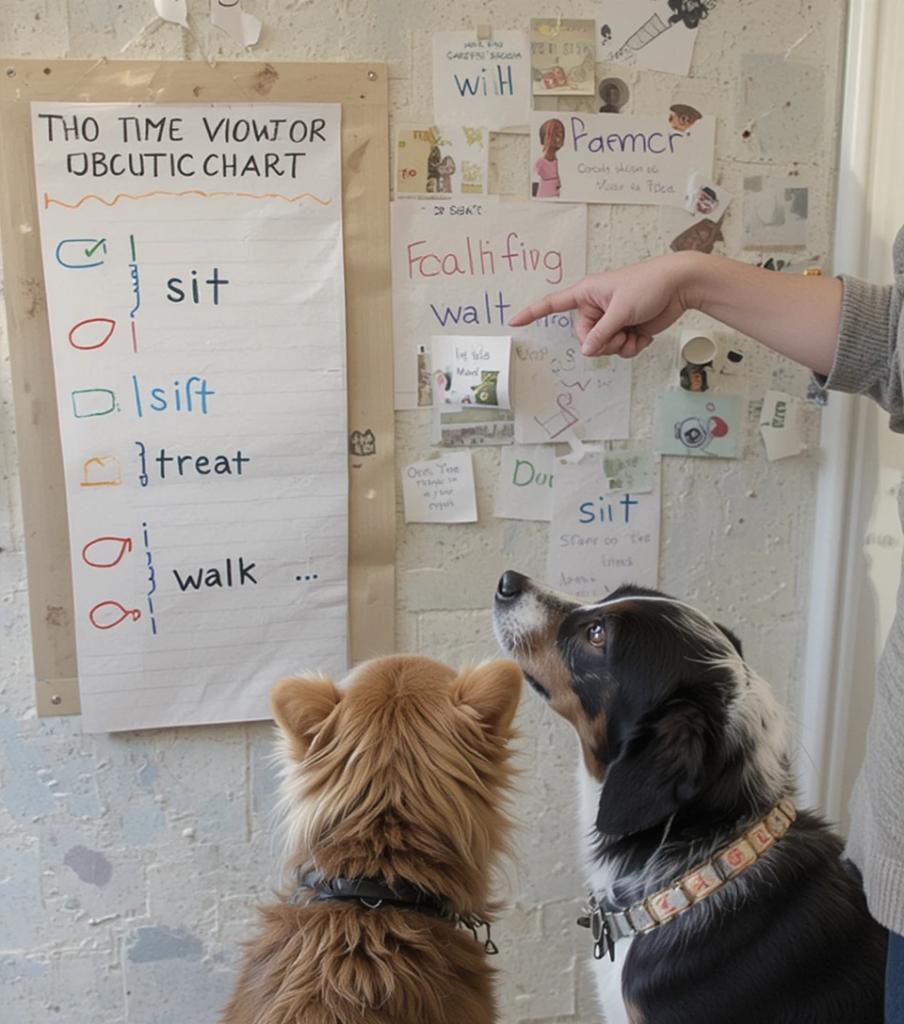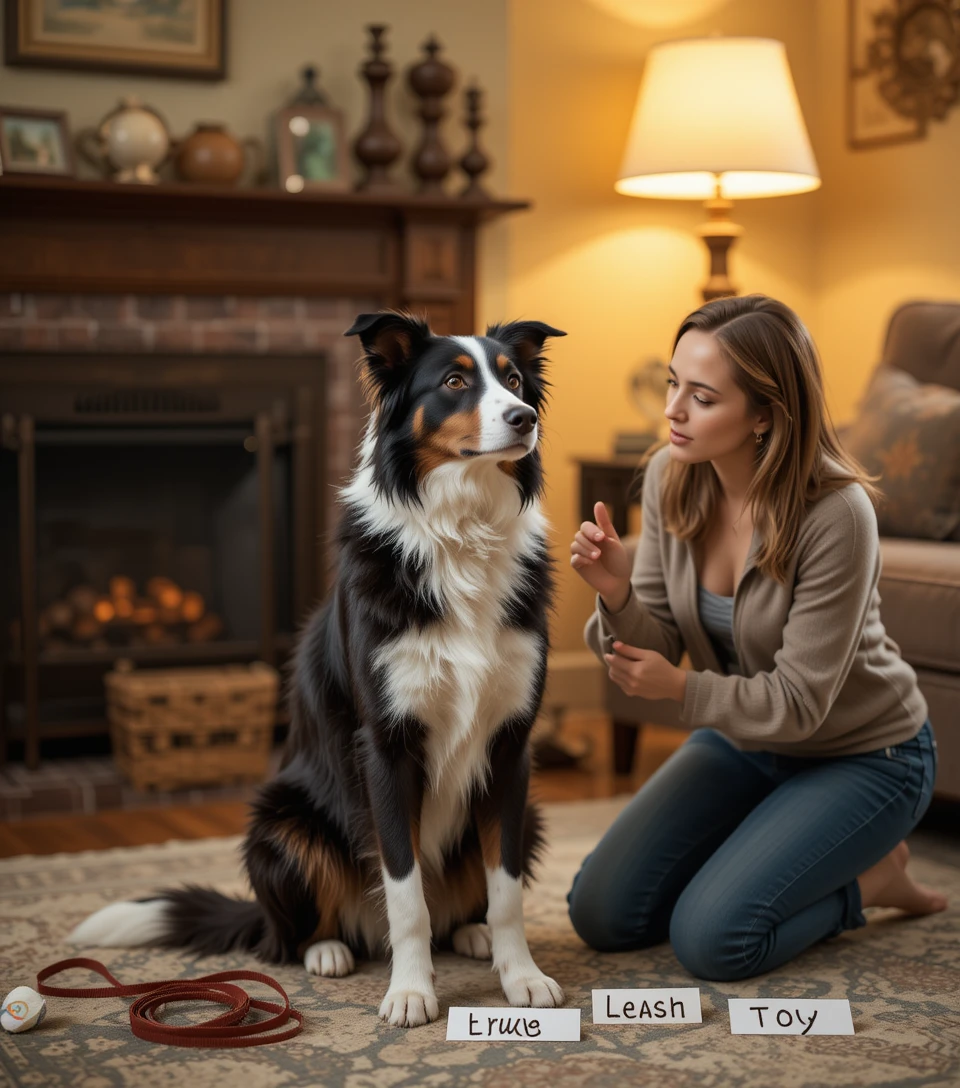Introduction
Did you know your dog might be smarter than you ever imagined? 🐶
The shocking truth is that dogs can learn over 100 words and gestures, and some exceptional pups have even surpassed 1,000! Science-backed studies are rewriting what we know about canine intelligence, revealing that your furry companion might be fluent in more “doglish” than you thought.
In this article, we’ll dive into how dogs understand human language, which words and gestures they learn best, and how you can start boosting your dog’s vocabulary today.
1. How Dogs Learn Words and Gestures
Dogs learn language through association, repetition, and positive reinforcement. When you say “sit” and reward your dog every time they respond correctly, they begin to associate that sound with the action and reward. Similarly, hand gestures become meaningful through repetition.
Dogs don’t understand grammar or sentence structure, but they are remarkably skilled at picking up on consistent cues, both verbal and nonverbal.
🔑 Key insight: Dogs are excellent at pattern recognition, not just memorization.
2. The Science Behind Canine Intelligence

One of the most famous studies in dog cognition centers around Chaser, a Border Collie who learned over 1,000 object names. Trained by Dr. John Pilley, Chaser’s abilities shattered assumptions about how complex a dog’s language comprehension could be.
Researchers have found that the average dog can learn 165 words, with the most intelligent breeds far exceeding that. Studies at institutions like the University of Leipzig continue to show how dogs interpret human communication much like a toddler does.
3. Words vs. Gestures: Which Do Dogs Understand Better?
While dogs can understand both, many respond more quickly to gestures. Why? Dogs are naturally tuned to observe body language—a skill inherited from their wild ancestors and honed through domestication.
For instance, pointing at an object or using a hand signal often results in faster comprehension than a verbal cue alone. However, combining both yields the best results.
4. What Kinds of Words Do Dogs Learn?
Dogs can learn a range of words, typically falling into these categories:
- Verbs: Sit, stay, roll, fetch
- Nouns: Ball, leash, treat, names of family members
- Commands: No, come, drop it
- Tonal cues: Words said with emotion (e.g., “good boy!”)
Emotional intonation plays a major role. Dogs recognize not just words, but the feeling behind them.
5. How Many Words Can the Average Dog Learn?

While Chaser was extraordinary, the average dog can learn between 80 and 165 words. Some breeds, especially Border Collies, Poodles, and German Shepherds, show higher aptitude.
However, even mixed breeds or senior dogs can develop a strong vocabulary with consistent training.
6. Best Training Techniques to Teach Dogs More Words
Ready to grow your dog’s vocabulary? Try these proven methods:
- Positive reinforcement: Reward correct responses with treats or praise
- Labeling routine objects: Say “leash” or “toy” during use
- Consistency: Use the same word and tone for each action
- Daily practice: Short, 5–10 minute sessions are highly effective
Pro tip: Introduce one new word or gesture at a time and pair it with an action.
7. Gestures Dogs Recognize Naturally
Even without training, dogs often respond to human gestures like:
- Pointing
- Open palms
- Arm movements
- Facial expressions
- Eye contact
You can build on these natural instincts with deliberate signals like hand raises, finger snaps, or directional cues.
8. Benefits of Expanding Your Dog’s Vocabulary
Why teach your dog more words and gestures? Here’s what you gain:
- Stronger communication
- Fewer behavioral problems
- Increased mental stimulation
- Greater confidence in new environments
The result is a happier, smarter, and more responsive dog.
9. Common Myths About Dog Intelligence
Let’s debunk some persistent myths:
❌ Myth: Dogs only respond to tone
✅ Truth: They understand both tone and word meaning
❌ Myth: Only certain breeds are smart
✅ Truth: While some breeds excel, all dogs can learn with patience
❌ Myth: Dogs can’t learn beyond puppyhood
✅ Truth: Senior dogs are still capable of learning new things
10. Can You Teach an Old Dog New Words?
Absolutely! 🐾
While senior dogs may learn at a slower pace, their comprehension capacity remains intact. Keep training sessions brief, upbeat, and adapted to their energy level.
Use familiar routines to introduce new cues gradually. Cognitive enrichment can even help delay signs of canine cognitive dysfunction.
Conclusion
The science is clear: Dogs can learn far more than we ever thought possible. Whether it’s mastering 100+ words or interpreting your every gesture, your dog is ready and eager to communicate.
Try this today: Pick one object, say its name consistently, and reward your dog when they respond. You’re on your way to unlocking your dog’s hidden genius. 🧠🐕
🔟 Frequently Asked Questions (FAQs)
- How many words can an average dog learn?
Most dogs can learn between 80 and 165 words with proper training. - What’s the most intelligent dog breed in terms of word recognition?
Border Collies top the list, followed by Poodles and German Shepherds. - Can dogs understand full sentences?
Not in the human sense, but they recognize key words and emotional tone within phrases. - How do I know if my dog understands a word?
Watch for consistent responses, like turning their head, fetching the item, or performing an action. - Do gestures work better than words for training?
Often yes—dogs are highly responsive to body language and visual cues. - Is it possible to teach older dogs new gestures or words?
Yes! Senior dogs can continue learning with gentle, consistent training. - How quickly can dogs learn new vocabulary?
Some pick up new words within days, especially with frequent repetition and reward. - What are the easiest words to start teaching a dog?
Basic commands like “sit,” “stay,” “come,” and “treat” are great starting points. - Do dogs really understand emotions behind words?
Yes, dogs are highly attuned to vocal tone and facial expressions. - Can I use bilingual commands with my dog?
Yes, dogs can learn commands in multiple languages if each cue is clear and consistent.

